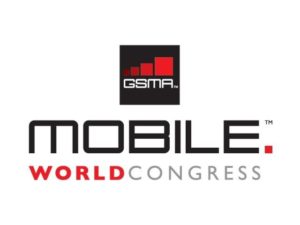
Mobile World Congress (MWC) is always a great opportunity to investigate what recipe the major domain players are cooking up for us in their high-tech kitchen, especially with 5G trending and, more importantly, being tested in a few cities.
What 5G promises to deliver
5G promises several benefits, including:
- More bandwidth for better quality of experience: 20 Gbps instead of 1 Gbps
- Lower latency: 1ms instead of 10ms
- Lower battery consumption
- Internet of Things: applications that do not depend on the operator with machine-to-machine communication
- Fixed/mobile convergence for video and data delivery
- Mobile broadcasting and seamless switching between different delivery modes, including unicast, multicast and broadcast, thanks to the usage of a common streaming format
- Great connectivity everywhere
The tech powering 5G 
Of course, the promise of 5G relies on several technical concepts, including:
- The usage of new bandwidth spectrum, allowing mobile operator to deliver better performances
- Separation of the control plane and data plane: The control plane makes decisions about where traffic is sent and what path is used. The data plane (or user plane) forwards the traffic to the destination according to the control plane logic.
- Network slicing: The objective is to let operators provide portions of their networks for specific customer use cases. Each use case receives a unique set of optimized resources and network topology — covering certain SLA-specified factors such as connectivity, speed, and capacity — that suit the needs of that application. It leverages SDN (software defined networking) and NFV (network function virtualization) concepts to manage dynamic allocation of resources. Currently, three main types of network slices have been identified: enhanced mobile broadband (eMBB), machine type communications (mMTC), ultra-reliable low-latency communications (URLLC).
- Containerization of components: both virtual machines and containers can be used to provide the flexibility in resources allocation required by 5G but the lightweight approach of containers is seen as more efficient.
5G technology in action at MWC
At MWC, 5G was a synonym for ultra-connectivity, with robots everywhere taking care of our well-being (i.e., protecting us from dangers by detecting our behavior at Intel, giving us free hugs at Infineon, playing a piano duet at ZTE, etc.), with connected cars looking like small lounges, with AI systems helping traffic management (at NTT Docomo) or zero-contact shopping (at CloudPick).
It also meant new devices incorporating Qualcomm’s Snapdragon 855 5G chipset — even if the focus was set on foldable screens with Samsung Galaxy Fold and the Huawei Mate X, despite the fact that usage and robustness still need to be addressed.
5G issues that remain
Some keynotes at MWC allowed major operators, which will depend on the actual deployment of 5G, to express some concerns. Etisalat, Liberty, and Telstra reminded everyone that operators are nervous about the economics of 5G. The technology implies huge costs, related to the spectrum exploitation rights, the infrastructure, and the new devices. Meanwhile 4G investments have just been made and are not profitable yet in all countries due to the difficulty of monetizing upon the benefits that are being offered.
The next killer app
“What is going to be 5G killer app?” is quite naturally the several-billion-dollar question on everybody’s mind. Some answers were considered during the show:
- One idea is to turn your smartphone into a computer, as extolled by Miraxess, the French company that won a Business France Award for innovation.
- We also saw the example of turning your smartphone into a server capable of hosting a 20-player Fortnite game, showcased by Cisco.
- Video, simply video, was the idea suggested by Liberty.
Another possibility is that anybody can create and deploy a killer app, as suggested by ARM, before leaving the floor to a panel of very young CEOs (the eldest was 15!) who had some pretty good ideas about this.
Operators’ role in the 5G future
At Broadpeak, we believe that operators have a part to play as an enabler of creativity. We think they should offer the best network possible to make it easy for innovative solution providers to deliver a great experience to their users, controlling not only the look and feel of an app, but also the means to deliver its content. 5G is all about multi-tenant, dynamic resources allocation, pay-as-you-use, and smart pipes. It’s about leveraging network slicing to create differentiated qualities of service (QoS) and on NFV to allocate compute, storage, and connection resources dynamically. These concepts will be key to triggering the 5G revolution.
Broadpeak’s involvement in 5G projects like SaT5G (http://sat5g-project.eu/ ) and 5G-Xcast (https://5g-xcast.eu/) consists of providing operators with tools that will allow them to become “smart pipes.” We offer a local caching solution, fueled by satellite or broadband connectivity, which enables operators to bring popular content closer to end-users, down to the mobile backhaul. Its built-in multi-tenant capability allows seamless integration in any content delivery strategy and is based on paying only for resources used. We also offer a service router capable of analyzing the context of end-users’ requests (i.e., device capabilities, local streaming possibilities, content popularity) so that operators can select the best route for video delivery, whether it be unicast, multicast ABR or eMBMS. This concept was awarded the Business France Award for innovation during the first day of the MWC show.

Jacques Le Mancq receiving Business France Award at MWC.
More details about Broadpeak’s solutions for 5G mobile networks are available here.

